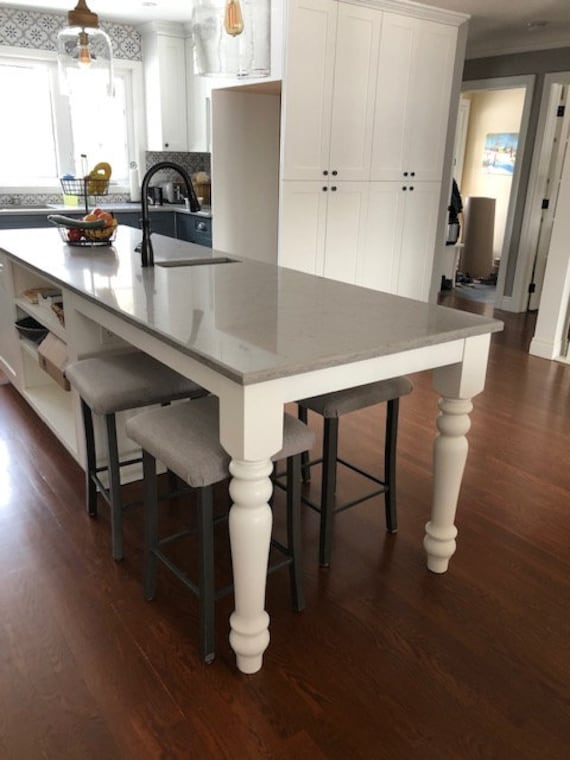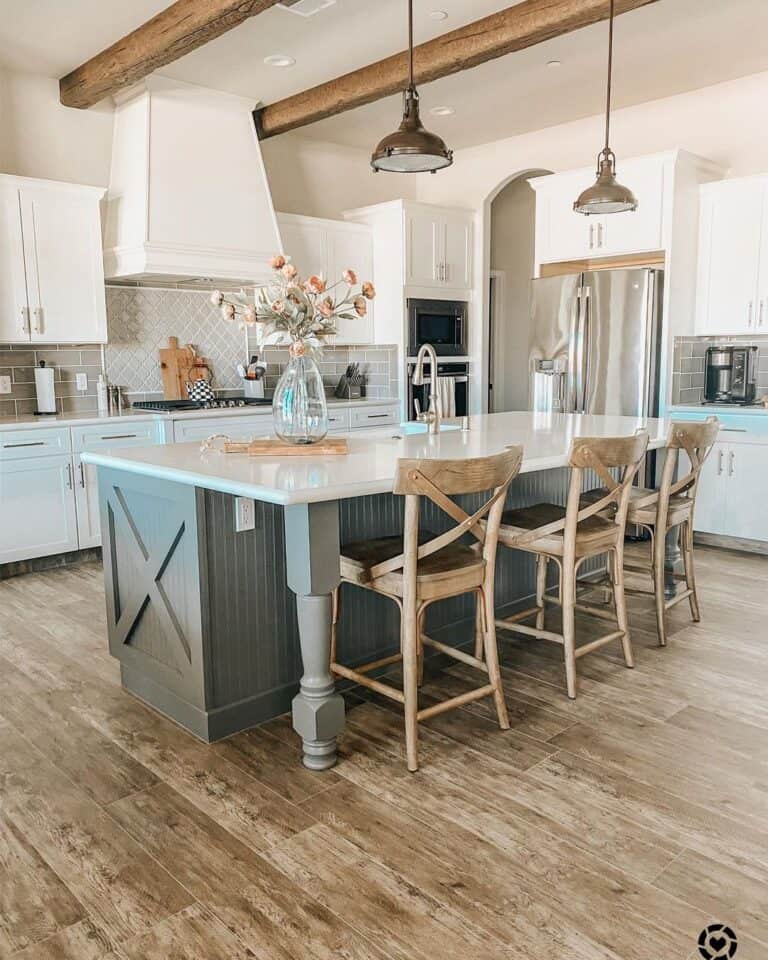Transform Any Type Of Kitchen Area with Beautiful Legs For Kitchen Island Selections
Transform Any Type Of Kitchen Area with Beautiful Legs For Kitchen Island Selections
Blog Article
Important Factors to Consider When Picking Legs For Cooking Area Island
Choosing the appropriate legs for a kitchen area island involves a careful analysis of multiple aspects that can significantly affect both capability and aesthetic charm. As we discover these components, it ends up being clear that each choice can have far-reaching ramifications for the total kitchen experience.
Material Options
When picking legs for a kitchen island, understanding the different material choices is important for accomplishing both visual appeal and structural stability (Legs For Kitchen Island). The option of product substantially influences not just the toughness of the island but also its general design and capability
Wood is a popular choice, providing warmth and convenience. Strong hardwoods, such as oak or maple, give stamina and can be tarnished or repainted to match the cooking area decor. Metal legs, commonly made from stainless-steel or functioned iron, contribute a contemporary and industrial feel while making sure longevity and security. These products are resistant to put on and can support substantial weight, making them optimal for larger islands.
One more option is crafted products, like MDF or plywood, which can be a lot more economical while still using a variety of finishes. However, they might not supply the exact same level of security as solid wood or steel. Products such as acrylic or glass can produce a contemporary appearance, though they may require extra support to make sure stability.
Inevitably, the choice of material for kitchen area island legs ought to straighten with the preferred functionality and the overall motif of the kitchen area.
Style and Style

When thinking about style, the shape and surface of the legs are vital. Conical legs can supply a feeling of agility and sophistication, while thicker, a lot more durable legs can communicate stamina and stability. Furthermore, the surface-- be it painted, discolored, or natural-- should complement the cabinetry and kitchen counter products to produce a unified look.
Furthermore, the design of the legs can additionally mirror individual taste. Customized or decorative legs, such as those including complex carvings or one-of-a-kind geometric forms, can act as prime focus, including personality and character to the kitchen. Inevitably, the ideal selection will certainly not only enhance capability however also boost the aesthetic appeal, making the cooking area island a standout function of the home.
Elevation Factors To Consider
Selecting the appropriate elevation for kitchen area island legs is crucial, as it straight affects both functionality and convenience. The typical elevation for a kitchen island typically varies from 36 to 42 inches, aligning with usual counter top elevations. A 36-inch height is excellent for cooking and food preparation, permitting comfy use of cooking area appliances and devices. Conversely, an elevation of 42 inches is frequently favored for islands planned for bar seating, suiting taller stools and using a casual dining experience.

It is additionally important to represent users' elevations and preferences. Tailoring the height can ensure a comfy experience for all member of the family, making the kitchen area island an extra useful and pleasurable room.
Weight Support
Making certain sufficient weight assistance for kitchen area island legs is essential for both security and capability. The kitchen area island often offers numerous functions, including food prep work, dining, and extra storage space, necessitating a durable assistance structure. When choosing legs, it is crucial to think about the total weight capacity needed based upon the island's intended usage and the products that will be put on it.
The selection of material for the legs plays a considerable duty in their weight-bearing abilities. Strong wood, metal, and sturdy compounds typically supply premium strength compared to lighter products. In addition, the check that style of the legs-- whether they are right, tapered, or have a pedestal form-- can influence their capability to disperse weight properly throughout the structure.
Furthermore, the leg positioning must be purposefully prepared to boost security. Legs positioned at the corners or with a larger base can better support much heavier tons. Constantly get in touch with the manufacturer's requirements regarding load limits to guarantee that the legs can sustain the intended weight without jeopardizing security. In summary, selecting kitchen island legs with adequate weight support is important for creating a safe and functional cooking room.
Installment and Maintenance
Appropriate installment and upkeep of kitchen area island legs are critical for making certain longevity and security. This frequently entails securing the legs to the island base making use of appropriate bolts, ensuring that the legs are level and straightened.
When installed, routine upkeep is necessary to protect the honesty and appearance of the legs - Legs For Kitchen Island. For wood legs, routine cleaning with a wet towel and application of suitable wood this hyperlink gloss can prevent wetness damages and keep their finish. Metal legs might call for a gentle cleaning option to get rid of grease and gunk, complied with by a completely dry cloth to avoid corrosion development
Additionally, examine the legs webpage consistently for indicators of wear or damage, such as cracks or loose joints. Tightening screws or screws as required can additionally lengthen the lifespan of the legs. By sticking to these installment and maintenance practices, property owners can guarantee that their kitchen area island continues to be durable and aesthetically appealing for many years to come.
Verdict

Visual comprehensibility is critical in choosing the design and layout of legs for a cooking area island, as these elements significantly influence the general setting of the room. Conical legs can give a sense of agility and elegance, while thicker, a lot more durable legs can share toughness and security.Choosing the appropriate height for kitchen island legs is important, as it straight affects both performance and convenience. In recap, picking cooking area island legs with adequate weight assistance is essential for creating a safe and functional cooking area.
In final thought, choosing legs for a kitchen island necessitates careful consideration of numerous variables, consisting of material choices, style, elevation, weight assistance, and setup.
Report this page